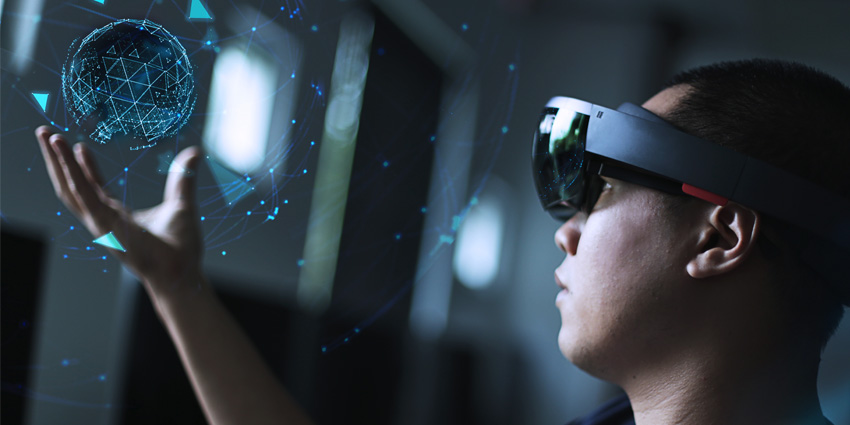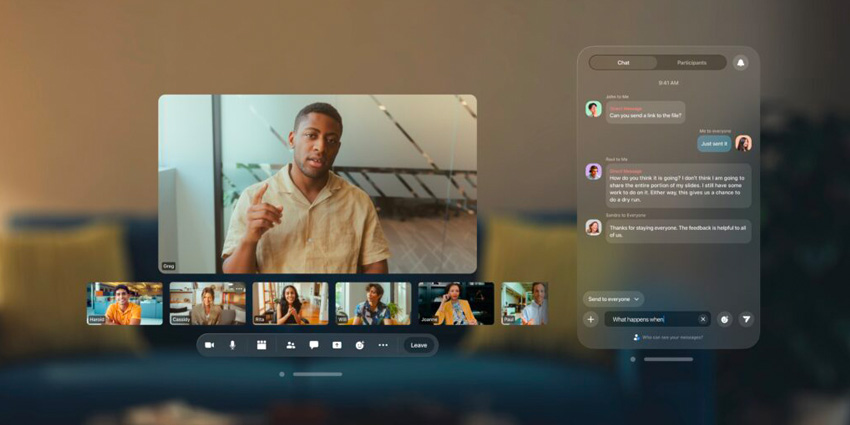A report from Market Research Future covering mixed reality (MR) growth forecasts that the space will reach an estimated CAGR of 43.26 percent between 2022-2030.
The extended reality (XR) technology market is becoming more accessible and available to the broader world. Thanks to the increasing presence of consumer and enterprise-grade XR solutions, the audience reach of immersive technology is expanding.
The MR report also estimates the overall market may reach $9.21 billion, predominantly in North America.
While MR is the most niche immersive avenue. The space is no longer in its exploratory stage, thanks to recent innovations from firms such as Meta MR is starting to emerge. Although MR hardware costs are still relatively expensive, as hardware innovation continues, the space will become more accessible.
Instead, people everywhere are beginning to demand more virtual world integration into their physical environments. While augmented and virtual reality (AR/VR) is paving the way for the immersive future. MR is also a part of the marketplace that is worth assessing.
MR goes above and beyond the potential of other immersive technologies. With MR, vendors allow people to interact with digital assets in the virtual world through sensors, computer vision, and more.
Mixed Reality Today
2022 is a breakout year for MR hardware and software. Following Connect 2022, Meta debuted the Quest Pro, a consumer and enterprise-grade MR headset.
The Menlo Park-based firm released its MR device in October, and Meta priced the Quest Pro device at £1,799 in regions including the United States, United Kingdom, Canada, and France.
The device also includes a powerful Qualcomm Snapdragon XR2+ processor, TruTouch haptics, and a full-colour passthrough via Meta’s Presence Platform for MR applications. The Presence Platform is an MR operating system (OS) which allows immersive software developers to create and distribute MR applications. Meta has a range of digital storefronts like App Lab that help developers distribute their creations based on their experience level.
An enterprise-grade application that leverages the Quest Pro’s Presence Platform is ShapesXR, a collaboration and design application. The application launched alongside the Quest Pro in October. ShapesXR is also available on the Meta Quest, allowing owners of the older device to access essential MR collaboration opportunities.
Competitive Growth in the Mixed Reality Market
Alternatively, major Meta competitor PICO debuted its own MR device in 2022. PICO 4 is a headset with features similar to the Meta Quest Pro. The device contains a 4K display at 1200 pixels per inch and 2160 x 2160 resolution, a 105-degree field of view (FoV), and 70/90 refresh rates. Moreover, the PICO 4 contains a Qualcomm Snapdragon XR2 processor like the Quest Pro.
The device also runs MR applications with full-colour passthrough. The PICO 4 will also come as an enterprise edition next year to suit enterprise-grade immersive applications and use cases.
Moreover, Microsoft is powering many MR hardware and software solutions with its immersive software development kit. The firm’s MRSDK operates on an OpenXR framework, meaning that the toolkit supports various XR devices, including the Meta Quest, Windows Mixed Reality, SteamVR, and Oculus Rift.
The Future of Mixed Reality
The rise of MR technology like the Meta Quest Pro is opening the door for ideas like holographic collaboration. MR also paves the way for applications like 3D and virtual modelling to minimise innovation’s resource and expense demands.
Once MR solutions become mainstream, we could discover that innovation in various other tech landscapes accelerates too. MR will allow teams to collaborate more freely with specialists around the globe. Devices enable workers to interact with digital twin Blueprints and virtual designs that don’t require expensive processing.
As stated, the forecasts place the MR industry’s CAGR at 43.26 percent. The growth comes from increased investments in hardware devices, software, and platforms. Companies like PICO, Microsoft, and Meta are entering the market with new, more accessible technology all the time.
Is the Future in Mixed Reality?
MR is just one component of the XR environment, including AR, VR hardware, and the required integrated technologies. However, many experts believe this technology could be a crucial turning point in blending the physical and digital worlds.
However, transformations in the environments of computer vision, graphic processing power, new input devices and display technology are helping to set MR apart. Today, various industries, from the educational environment to the manufacturing landscape, are reaching out for new MR tools to help them accomplish incredible things.
The rise of cheaper smart glasses, particularly in companies undergoing industry 4.0 and digital transformation, leads to broader usage. Smart glasses allow end-clients to optimise workplace operations using features like hands-free navigation and communication.
MR makes the link between our physical and digital worlds more immersive and interactive. Following the increased demand for virtual experiences in 2020, the MR technology adoption surge will likely continue.







